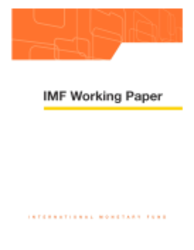
Banks' Reserve Management, Transaction Costs, and the Timing of Federal Reserve Intervention
We use daily data on bank reserves and overnight interest rates to document a striking pattern in the high-frequency behavior of the U.S. market for federal funds: depository institutions tend to hold more reserves during the last few days of each "reserve maintenance period," when the opportunity cost of holding reserves is typically highest. We then propose and analyze a model of the federal funds market where uncertain liquidity flows and transaction costs induce banks to delay trading and to bid up interest rates at the end of each maintenance period.
Publication date: October 2000
ISBN: 9781451857924
$15.00
Add to Cart by clicking price of the language and format you'd like to purchase
Available Languages and Formats
| English |
Prices in red indicate formats that are not yet available but are forthcoming.
Topics covered in this book
This title contains information about the following subjects.
Click on a subject if you would like to see other titles with the same subjects.
Finance , Finance , interest-rate smoothing , value of waiting , statistics , equation , probability , credit
Also of interest
Summary
Copyright © 2010 - 2025
Powered by:
AIDC



